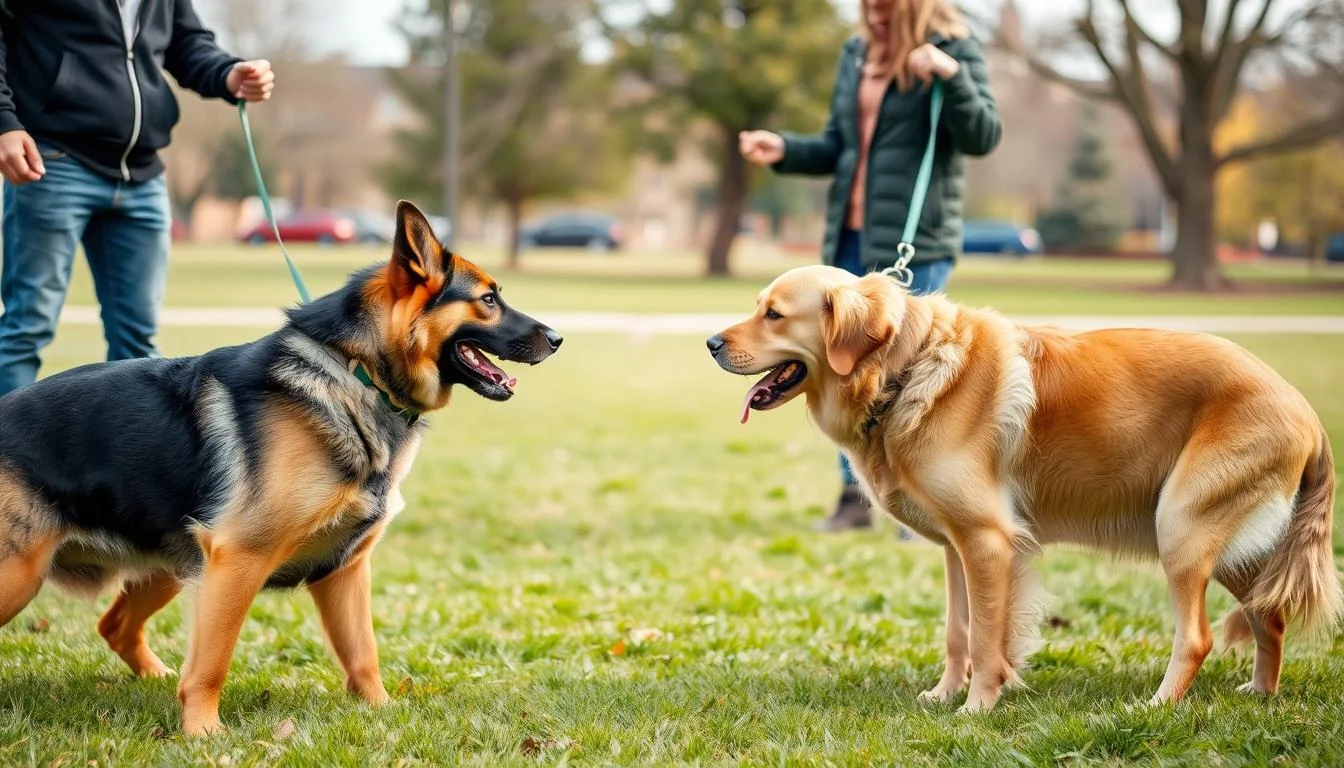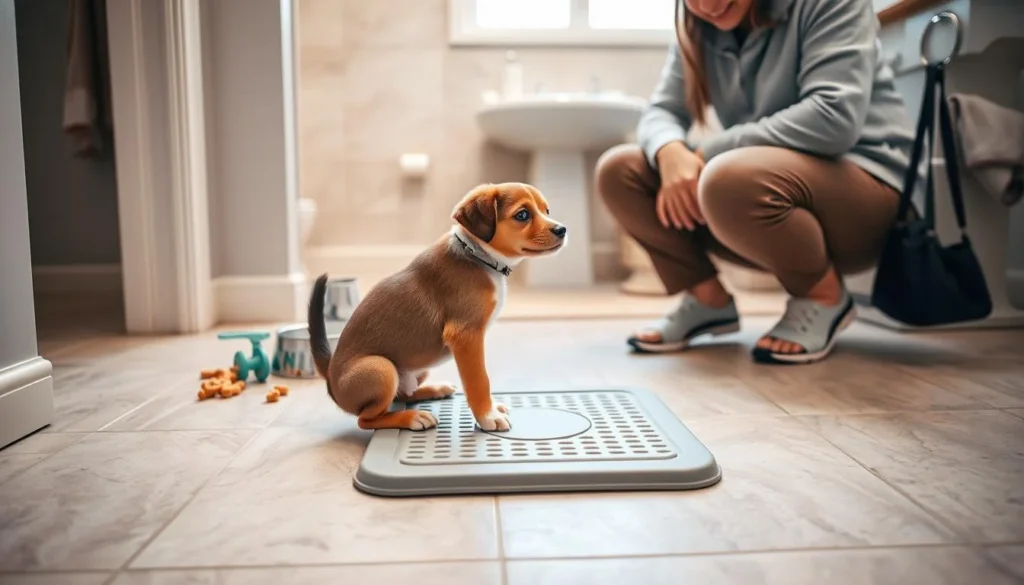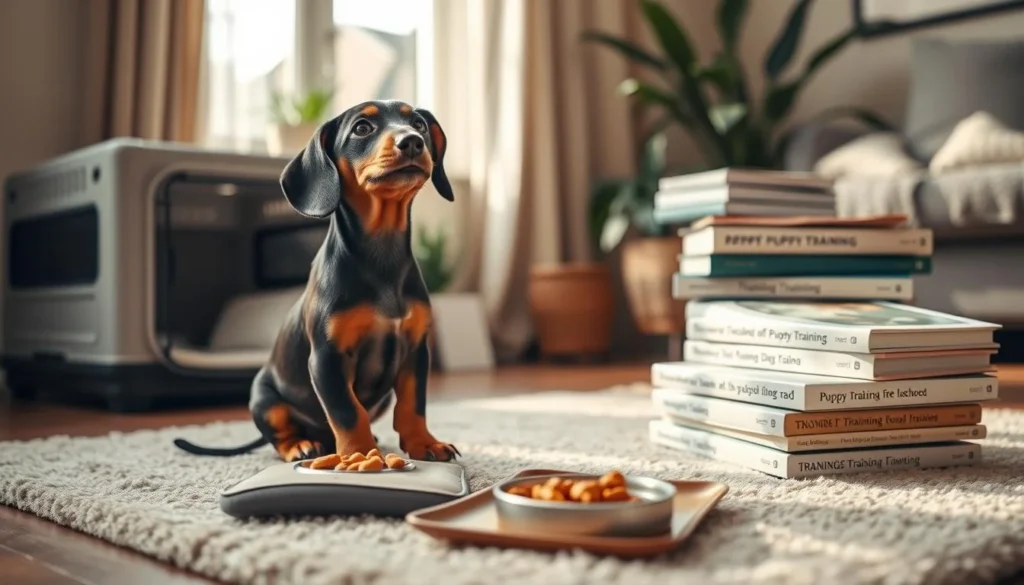Watching your dogs fight can break your heart. It fills you with anxiety and fear. I've felt this way too, seeing my dogs turn against each other.
This experience made me look for ways to stop dog fights. I wanted to help them live in peace. In this article, I'll share what I've learned to keep our dogs happy and together.
Key Takeaways
- Understanding the root causes of dog aggression is essential.
- Positive reinforcement techniques are effective strategies for dog training for aggression.
- Creating safe spaces and boundaries can foster peaceful coexistence in dogs.
- Resource management plays a crucial role in preventing fights.
- Training your dogs with obedience commands helps reduce aggression.
- Recognizing signs of distress can aid in preemptively stopping fights.
Understanding Why Dogs Fight
Dog behavior is complex, with stress being a key factor in aggression. Stress can cause dogs to react strongly, leading to fights. It's important to find and fix the stress causes to keep my pets calm.
The Role of Stress in Dog Aggression
Stress and dog behavior are closely connected. Things like moving, family changes, or loud noises can make dogs anxious. This anxiety can turn into aggression, as a way to defend or show dominance. Knowing this helps me manage my dogs' lives better and reduce stress.
Common Triggers for Dog Fights
Knowing what causes dog fights helps prevent them. Several things can lead to aggression, including:
- Changes in family dynamics
- Increased noise levels
- Health issues affecting a dog's mood
- Resource guarding, such as food or toys
Being aware of these triggers lets me take steps to prevent fights. Changing my dogs' environment and routines can help avoid aggressive behavior.
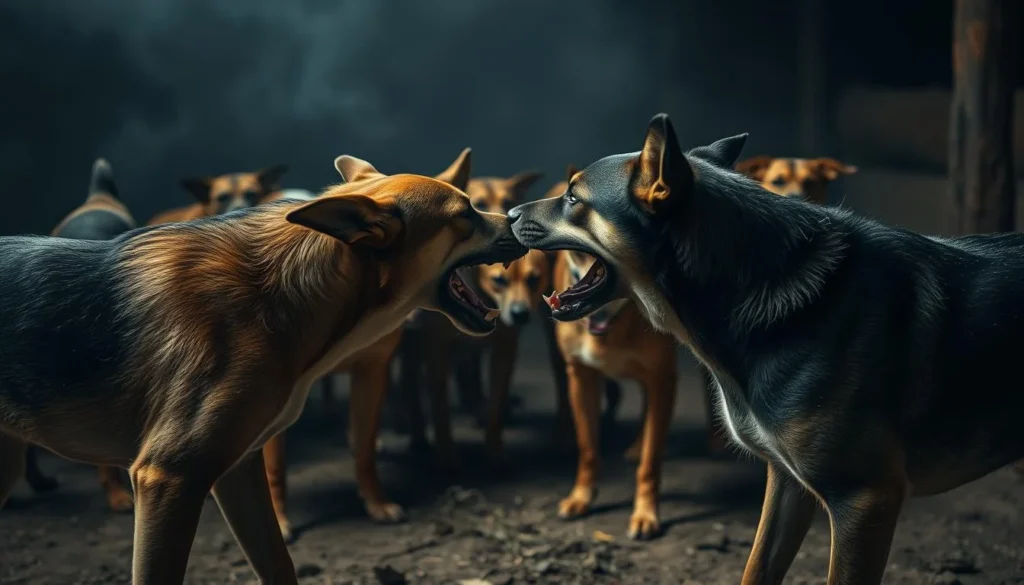
Signs Indicating Dogs Are About to Fight
It's vital to know the signs of dog aggression to keep all dogs safe. By understanding their body language and sounds, we can spot trouble before it starts. Here are some key signs that might mean a fight is coming.
Body Language Clues to Look Out For
Some dog behaviors can warn us of an impending fight. Look out for:
- Intense staring: A dog staring hard at another can mean they're ready to challenge or confront.
- Stiff posture: A dog standing stiff with raised hackles shows they're tense and ready to act.
- Showing teeth: When a dog bares its teeth, it's usually a warning.
- Tail position: A stiff, high tail can mean a dog feels protective or aggressive.
Vocalization Cues That Signal Distress
Dogs also show their feelings through sounds. Listen for these signs of distress:
- Growling: A low, growling sound often means a dog is about to get aggressive.
- Barking: Too much barking can show excitement, fear, or a need to protect territory.
- Whining: Whining can mean a dog is feeling anxious or uncomfortable.
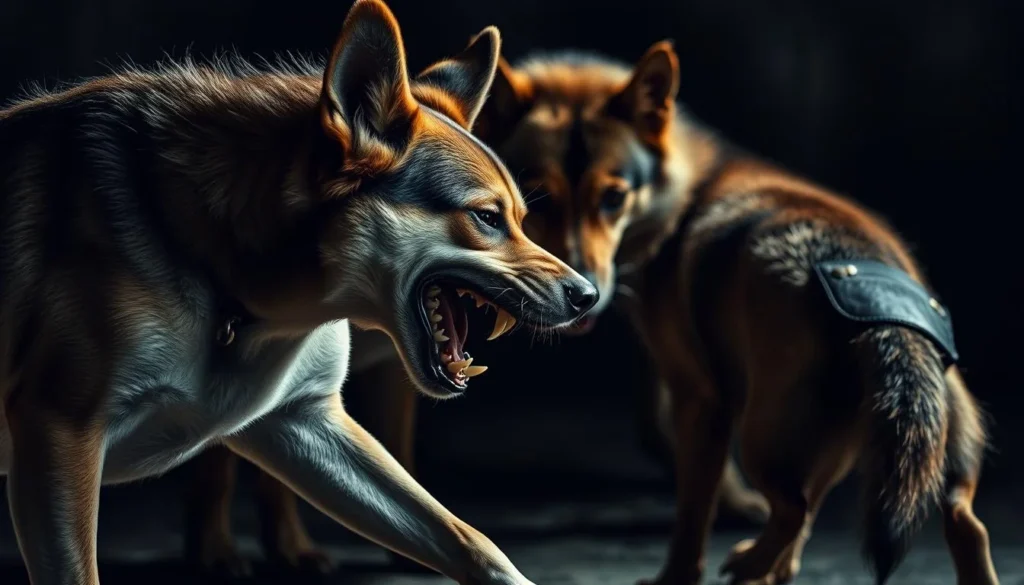
How to Stop Dogs from Fighting
Stopping dog fights needs a careful plan. It involves using positive reinforcement and setting up safe areas. These steps help make a peaceful home for our pets.
Positive Reinforcement Techniques
Positive reinforcement in dog training changes bad behavior to good. Dogs learn to do what we want by getting treats, praise, or play. Teaching them to sit and stay builds discipline and confidence.
Playful training sessions strengthen the bond between dog and owner. They also help address aggression, stopping fights before they start.
Creating Safe Spaces and Boundaries
Setting boundaries in the home makes dogs feel safe. Safe spots, like cozy beds, help them escape stress. This reduces fights and keeps the peace.
Creating these areas early on leads to a happier home. It stops fights by teaching each dog their place.
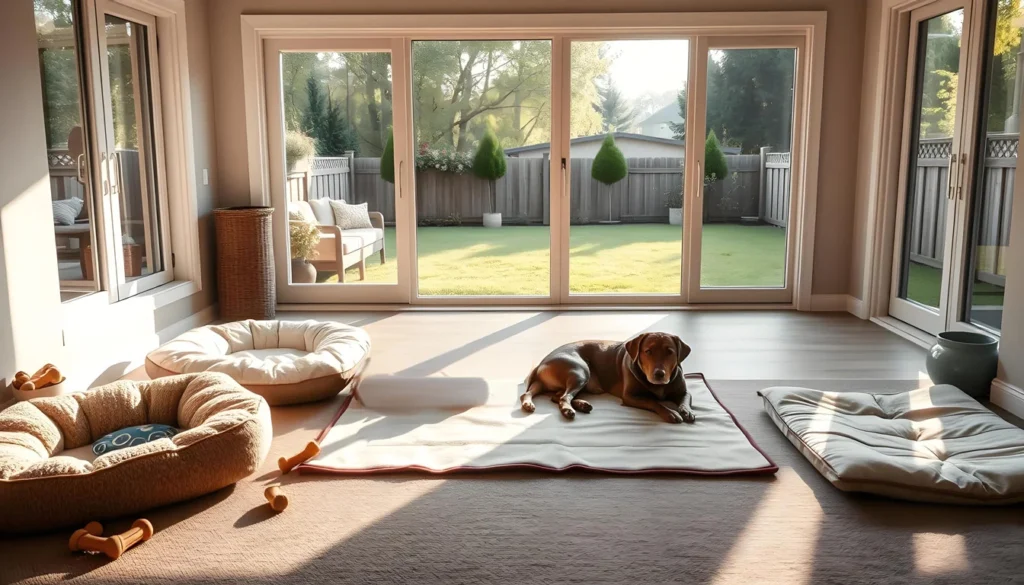
Managing Resources to Prevent Fights
Effective resource management in dogs is key to keeping peace. By using thoughtful solutions, we can lessen conflicts and make a calm home. Tailored feeding strategies for dogs help avoid fights over food. Giving each dog their meals in a quiet, separate spot can really help.
Feeding Strategies to Minimize Aggression
Feeding strategies for dogs should be consistent and separate. Having a special feeding area for each pet reduces stress and competition. This makes each dog feel secure, knowing their food is just for them.
Using barriers like gates can help keep pets separate during meals. It lets each pet eat without distractions, creating a peaceful mealtime.
Providing Separate Areas for Toys and Beds
Providing separate spaces for pets is also crucial. Each dog should have its own bed, toys, and personal items. This helps avoid fights over shared things like toys.
When each dog has its own space for play and rest, they get along better. These strategies help create a peaceful home for our pets.
Training Your Dogs for Peaceful Coexistence
Creating a peaceful home for my dogs begins with teaching them to live together. I focus on basic obedience commands to stop unwanted behaviors. This helps them respect each other and interact well.
The Importance of Basic Obedience Commands
Teaching commands like "sit," "stay," and "come" is key. These commands help my dogs behave better and reduce aggression. They feel secure when they know what's expected of them.
As they learn these commands, their behavior around each other improves a lot.
Desensitization is vital for my dogs to get used to each other. I start by showing them things at a safe distance, then get closer slowly. I reward them for staying calm with treats and praise.
This makes them associate each other's presence with good things. With time and effort, they will live together peacefully.
How to Prevent Dogs from Fighting Over Attention
Stopping dogs from fighting over attention means watching them closely. It's key to spot signs of resource guarding. This shows a dog feels anxious or threatened when sharing attention. Growling, stiffening, or blocking paths are signs they want all the attention for themselves.
Knowing these signs helps keep my home peaceful.
Recognizing Signs of Resource Guarding
Being aware of resource guarding is crucial. Dogs may act possessive over things they value, like attention or toys. Watching my dogs during play helps me spot these behaviors:
- Growling or snarling: These sounds mean they're uncomfortable.
- Blocking behavior: Standing in the way shows they want control.
- Body posture: A stiff stance or ears back means they're guarding.
Setting Up Structured Playtime
Structured playtime helps avoid fights over attention. It ensures both dogs get my attention in a fun way. This strengthens their bond and keeps things balanced. Here are some ways to do it:
- Make a schedule with different games, like fetch or tug-of-war.
- Choose toys that encourage sharing to prevent guarding.
- Give both dogs equal playtime to teach fairness and teamwork.
Steps to Take When a Fight Breaks Out
Seeing a dog fight can be scary for any pet owner. Keeping everyone safe is key. There are ways to stop fights without hurting anyone. Knowing how to handle it afterwards helps dogs feel better.
Techniques for Safely Breaking Up Fights
To stop dog fights, I use distractions to grab their attention. This includes:
- Shouting commands loudly to divert their focus
- Using a whistle or other loud noise to startle them
- Throwing a blanket over the dogs to obscure their vision
These methods need careful timing. They should be used when it's safe to step in. Knowing the risks helps me make smart choices in tense moments.
Aftermath Management for Stress Relief
After stopping the fight, managing the aftermath is crucial. I make sure each dog is in a quiet, separate spot to calm down. Giving them comfort items like favorite toys or blankets helps. These steps help my dogs feel safe and reduce their stress.
By taking thoughtful actions, I can lower my pets' anxiety. This keeps them safe and happy after a fight.
Can Dogs Live Together After Fighting?
Yes, dogs can live together after fighting with the right approach. It requires time and effort, but many owners have made it work. The key is to reintroduce them slowly and safely.
This method helps ease tension and builds trust. It's important to do this carefully to ensure a peaceful home.
Gradually Reintroducing Dogs
Starting with short, controlled interactions is the first step. Walking them on a leash, keeping them apart, is a good start. Feeding them near each other, but watching closely, helps them associate positively.
Using barriers like gates or crates lets them see and smell each other. This can help reduce anxiety and build curiosity.
Managing Interactions in a Safe Manner
When they seem comfortable, I increase their time together slowly. It's important to be patient and watch their behavior closely. Positive play and rewards for calm behavior help their relationship.
Keeping their interactions safe is key to their comfort and security. It might take weeks or months, but with care, they can live peacefully together.
Conclusion
To stop dog fights, we must know why they happen. We should watch for signs of trouble and use the right training. This helps keep peace in our homes.
Positive training and managing resources are key. They help our dogs get along better. This makes our homes happier places.
Training dogs to live together well is crucial. It makes them feel safe and loved. By following the tips in this article, we can create a peaceful home.
Understanding our dogs' needs and behaviors is important. It leads to a happier home. With patience and effort, we can have a loving bond with our dogs.

